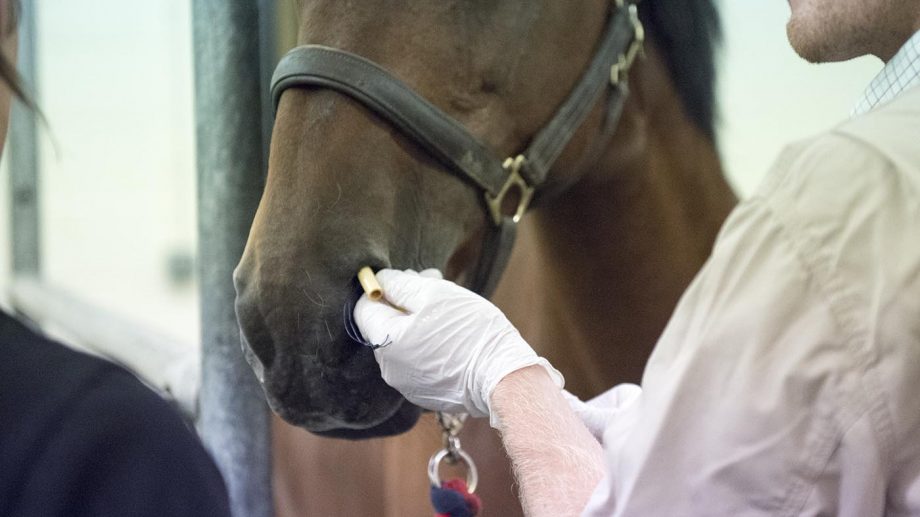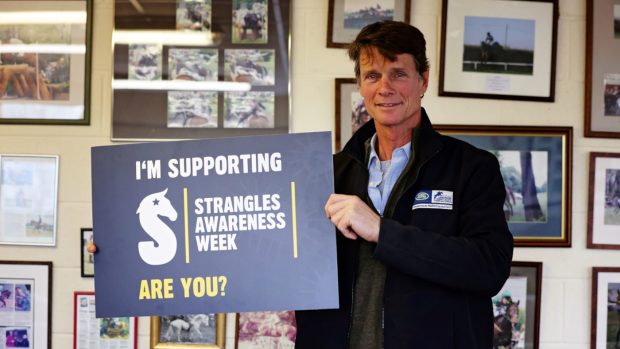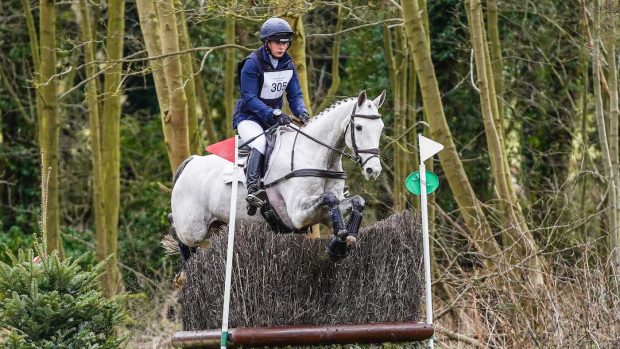The owners of a yard dealing with a strangles outbreak have spoken out on the importance of biosecurity — and being transparent with all involved.
Stephen Cole and Michael Parsons, of Parsons-Cole Equestrian, own a number of yards, the biggest of which, Nortonbury Farm in Letchworth, Herts, is affected, and still in lockdown.
The pair told H&H the first case was that of a new arrival, a rescued pony, who despite testing and biosecurity protocols, started showing signs of the disease and tested positive for strangles about four weeks ago. Since then, of the 42 horses at the yard, only three more have tested positive.
“Strangles can be a funny one; people think it’s like you’ve got leprosy or something,” Stephen said. “I feel people need to understand and learn more about it.”
Michael added that he has spoken to many people who have said their yards have had to be shut down for months at a time with strangles outbreaks but “it doesn’t have to be like that”.
“If you nip it in the bud, you can have things back to normal fairly quickly,” he said. “Within 45 minutes of finding out the rescue pony had it, our biosecurity plans were implemented.”
The pony had been isolated anyway, the pair explained, in accordance with the yard’s policy for new arrivals, and had initially tested negative for strangles, which the pair said demonstrates why such protocols for new arrivals are so important.
The plan, which was in place before the positive test and implemented immediately, included different zones; red for horses who had either tested positive or were showing signs, amber for those who had had contact with affected animals and green for those who had not. Each zone had different protocols.
“The plan also included foot baths, thermometers, isolation blocks, absolutely everything,” Michael said. “I think we have been lucky to a certain extent but if we hadn’t implemented the plan as quickly as we did, I think we’d be in a worse situation. We’ve got very strict processes and protocols, and will hopefully get out of this as soon as possible.”
Other measures include full hazmat suits for staff dealing with affected horses; the staff then have to go home, shower and change before they deal with any other animals.
“It’s been an emotional rollercoaster,” said Stephen. “I’ve got my own mares at the yard and three had scanned in foal. We were ecstatic but by the heartbeat scan, two had miscarried, which we and the vet think is because of everything that’s happened. We’re trying to protect all the horses; the youngsters and the older ones like a 28-year-old who pulled the Queen Mother’s funeral carriage. It’s a rollercoaster and not everyone understands.
“One example was at a shop the other day; a woman wouldn’t come anywhere near me, even though I said I was clean. I think people don’t understand it fully, which I think is more dangerous.”
The pair want to raise awareness of biosecurity; not just having a plan at yards but also basic measures such as not sharing buckets or equipment with others at shows.
“There needs to be more understanding of how it transmits,” Michael said. “And we’re not embarrassed about it, we’re open, which I think is a big thing, as is being transparent, with everyone.”
You may also be interested in…

Strangles: what is it, how to spot the signs, plus a new vaccine to help protect your horse

‘I wish people wouldn’t hide it’: owner who nearly lost pony to strangles encourages others to speak out
“It was such a relief for him to be given the all-clear; three times we thought we were going to

Subscribe to Horse & Hound magazine today – and enjoy unlimited website access all year round
Horse & Hound magazine, out every Thursday, is packed with all the latest news and reports, as well as interviews, specials, nostalgia, vet and training advice. Find how you can enjoy the magazine delivered to your door every week, plus options to upgrade your subscription to access our online service that brings you breaking news and reports as well as other benefits.





